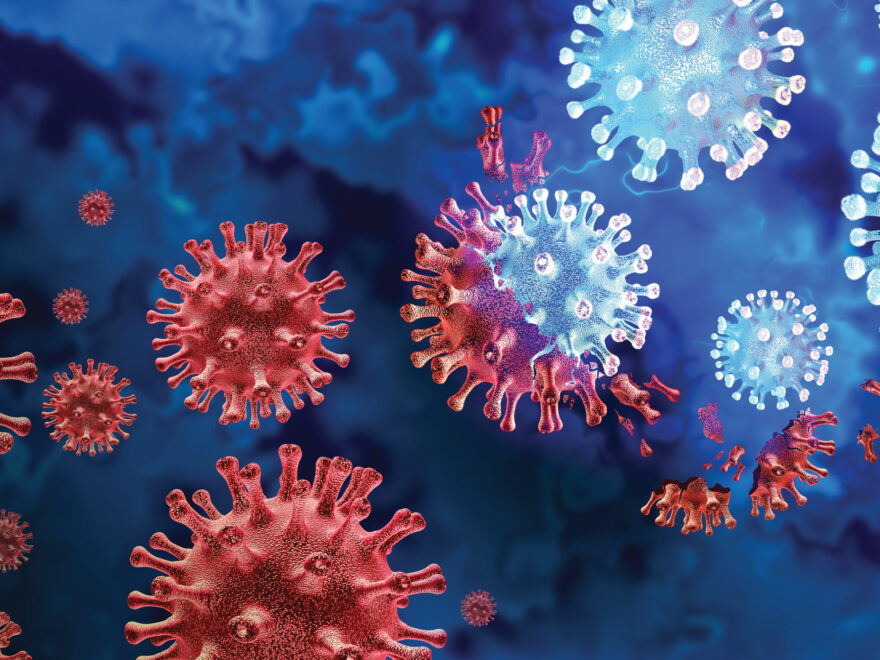Testing and returning to work during Omicron
At each of the three phases to the Omicron response, there are different requirements
for businesses, including testing and how long cases need to isolate for. This is to better enable critical workforces to continue operating through a widespread community outbreak of the Omicron variant.
Supporting critical infrastructure and supply chains
To ensure that sufficient workers are available to maintain critical infrastructure and supply chains throughout the Omicron outbreak, a critical workforce registration system will prioritise allocation of Rapid Antigen Tests (RATs) to businesses and provide for return-to-work testing for asymptomatic close contacts who would otherwise be required to self-isolate.
Government agencies will, over the coming week, proactively engage with key businesses in their sectors to ensure that critical workforces have been identified and registered, and that there are sufficient supplies of RATs for those workers when needed. Beyond this, the Ministry of Business, Innovation and Employment (MBIE) will develop an online portal – similar to that used for the Business Travel Registration system – to allow individual business to apply for critical worker status. This system will be called the Critical Services Register and more information will be made available to businesses shortly about this.
The Critical Services Register will hold a database of the critical workforce by sector and location. This information will be used by the Ministry of Health to allocate RATs depending on supply and need, including the geographical spread of any outbreak. Delivery of RATs will be managed by the Ministry of Health to ensure necessary storage and handling protocols are maintained.
‘Test to return’ approach
A critical worker is identified by their employer as a role within a critical industry as broadly defined by government that requires a person with particular skills who:
- Is required to undertake their role in person at the workplace.
- Is in a role that must continue to be performed to either prevent an immediate risk of death or serious injury to a person or animal, or prevent serious harm (social, economic or physical) to significant numbers in the community.
This approach will mean that critical workers who are close contacts will be able to return to work early, provided they return a negative RAT every day that they are at work throughout their required isolation period or as otherwise appropriate to their work setting.
They will only be able to go to work, not anywhere else – this protocol allows for return to work only. It does not mean that it ends isolation periods early.
The protocol will include:
- Daily symptom checks, and a daily negative RAT result, are required prior
to commencing work. - Strict use of a medical mask, donned before entry to the workplace, changed as needed during the day and strictly complying with any infection prevention and control protocols at work.
- When mask is removed (eg for eating and drinking) physical distancing must be maintained – eat alone in a well-ventilated space where possible.
- Travel alone to and from and around work or between jobs where possible.
- Ensure good ventilation when in small spaces and masks must be worn by everyone present.
- If symptoms develop at any stage, the worker will follow the public advice for close contacts with symptoms.
Managing a COVID-19 case at your business
At each phase of the Omicron response, there are different isolation and quarantine requirements for cases and contacts.
At Phase One
- Cases must isolate for 14 days (release by health official).
- Contacts need to quarantine for 10 days (test days five and eight, if symptomatic, then test immediately).
At Phase Two
- Cases need to isolate for 10 days (self-release after day 10 if asymptomatic for 72 hours).
- Contacts need to quarantine for seven days (test on day five).
At Phase Three
- Cases need to isolate for 10 days (self-release after day 10 if asymptomatic for 72 hours).
- Contacts need to quarantine for seven days (test if symptomatic).
- At all three phases of the Omicron response, critical workers under the Critical Workforce Registration System and health workers will be supported by public health guidance to enable close contacts to work.
- At all phases anyone with symptoms must isolate and get a test.
Mask wearing
At all phases of the Omicron response, critical workers should wear certified well-fitting medical masks. At Phases Two and Three, the Ministry of Health has further guidance on mask wearing for general health workers and higher risk health workers or border staff.
COVID-19: Ministry of Health – Use of masks and face coverings in the community


